Foot reflexology involves applying pressure to certain areas on the foot connected to the central nervous system through peripheral nerves. By rubbing a particular region, you can cut stress and reduce pain. Reflexology has not only long been recognized for its healing powers, but is also backed by modern evidence. Furthermore, simple foot reflexology is easy to learn and you can practice it at home.
How Does Foot Reflexology Work?
Foot reflexology is based upon reflex pathways pinpointed to particular regions of the foot. Reflexology charts indicate the reflexes for each body region. The following chart shows which body part you’re targeting.
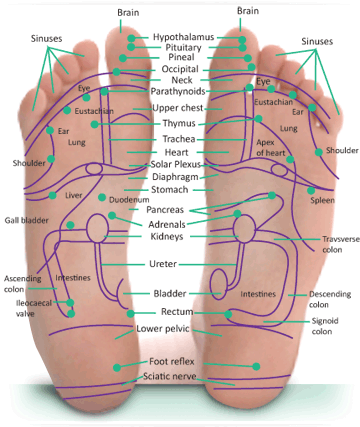
Reflexology is similar to massage, but the concept is different. Whilst massage targets muscles and soft tissues, foot reflexology is believed to operate through nerve endings and reflexes. You may find that some areas of your body become uncomfortable or tender during the session, although this should be relieved by increasing the pressure. However, reflexology should not cause pain.
How to Perform Simple Foot Reflexology to Relieve Discomfort
1. 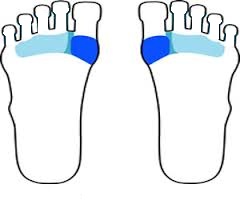 Alleviate Chest Discomfort
Alleviate Chest Discomfort
Chest tightness and breathlessness can indicate stress. To ease these sensations, rub the balls of your feet which correspond to the heart, lungs, chest, airways and shoulders.
2. 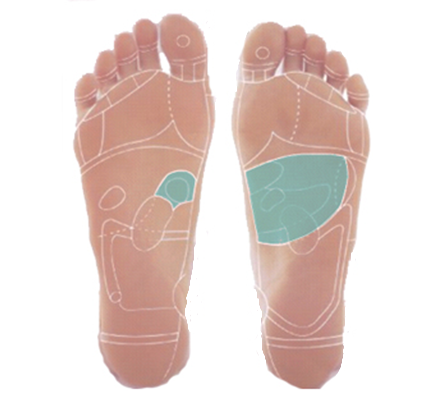 Reduce Stomach Upsets
Reduce Stomach Upsets
To calm an upset stomach which is common during stress, apply pressure to the non-weight-bearing region on the sole of the foot (the instep). Also try pressing a small hard ball into the inside edge of the foot. This will relax your stomach and boost circulation to the digestive system.
3. 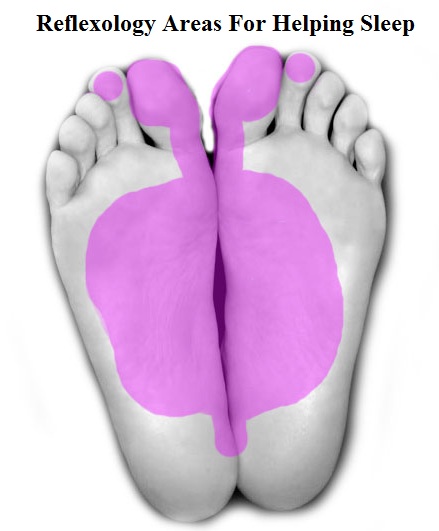 Relieve Insomnia
Relieve Insomnia
For better sleep, try stimulating various reflex points in your feet, particularly the areas associated with relieving stress and muscle tension. To relax tight muscles, rub the foot’s outside edges. For steady breathing, apply pressure to the balls of the feet, and for head and neck pain, concentrate on your toes. Finally, an upset stomach is calmed through massaging the instep.
4. Relieve Headache and Neck Tension
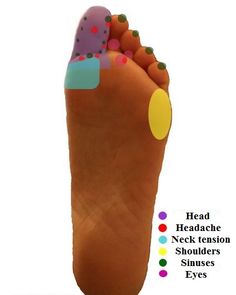 Basic headaches, e.g. tension and sinus headache, can be easily treated using reflexology. All the neck, head, face, and brain reflex points are in your toes. Migraine headaches, particularly those caused by sinusitis, can be relieved by massaging the whole surface of all your toes. This will also decrease neck tension, a common cause of headaches. However, if you suffer from more complex long-term headaches, get medical advice to assess for underlying health conditions.
Basic headaches, e.g. tension and sinus headache, can be easily treated using reflexology. All the neck, head, face, and brain reflex points are in your toes. Migraine headaches, particularly those caused by sinusitis, can be relieved by massaging the whole surface of all your toes. This will also decrease neck tension, a common cause of headaches. However, if you suffer from more complex long-term headaches, get medical advice to assess for underlying health conditions.
5. PMS
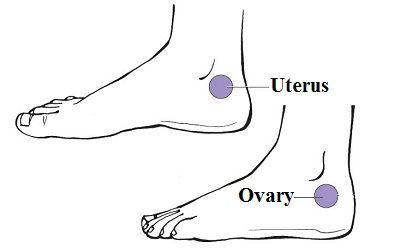 Simple foot reflexology can cut both the length and severity of period pain. To relieve premenstrual syndrome (PMS), concentrate on the regions of either side of your ankles which connect to the uterus and ovary. Massaging either with your fingers or a warm spoon to regulate mood and boost blood circulation around the reproductive organs. Try this 2-3 times a day.
Simple foot reflexology can cut both the length and severity of period pain. To relieve premenstrual syndrome (PMS), concentrate on the regions of either side of your ankles which connect to the uterus and ovary. Massaging either with your fingers or a warm spoon to regulate mood and boost blood circulation around the reproductive organs. Try this 2-3 times a day.
This video describes simple foot reflexology techniques for allergies, asthma and stress:
When Should Foot Reflexology Be Avoided?
Reflexology is considered safe, but some
times may not be suitable. Speak to your doctor if you have:
- Foot injury, including fracture, gout, or unhealed wounds.
- Vascular disease or osteoarthritis anywhere in the leg, ankle or foot,
- Thrombus or embolism. The circulation boost from reflexology can encourage blockages to dislodge, and travel to the heart, brain or lungs.
To prevent overstimulation, leave two days between different touch therapies, such as massage and reflexology.
Although babies and children can benefit from reflexology, it is difficult for them to keep still, so short sessions are best. You may need to avoid reflexology if you are pregnant.
